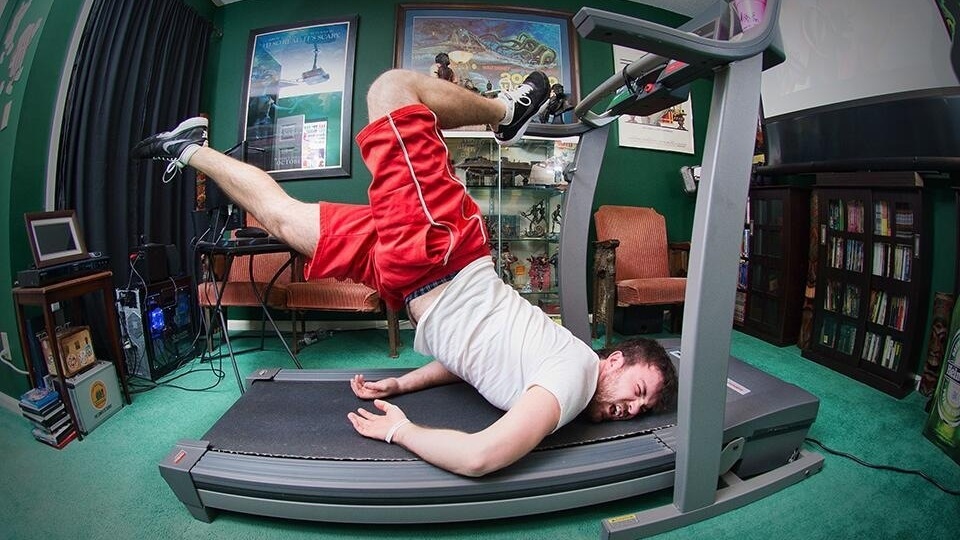
If exercise were a drug, it would be the most widely prescribed and most effective medication ever invented.
I’ve been in the medical and health/fitness industry for a long time. It’s really hard to motivate people to exercise even when they know they really should. I think the biggest impact I can have as a medical provider is get people to exercise who are not active. As a result, the challenge is not to get active people more fit, but rather to get deconditioned people to change their lifestyle as to meet basic requirements for exercise.
Here is a bit of perspective when it comes to trying to motivate people to exercise and why they will likely stop doing exercise programs and eventually fail. Keep in mind, my perspective is long-term health strategies with a focus on reducing the recurrence of spine injuries, rather than getting some sweet abs for your spring break vacation in Mexico.
Problem 1#: The exercises you are doing are boring
I think many people who fail to follow through with an exercise program do so because they are pushed into a direction that does not interest them. For example, if you don’t like lifting weights and hate gyms, maybe you should not be doing those exercises. If you feel really self-conscious in a yoga class, let’s find another way to meet your goals.
The Solution: There is more than one way to become more active and improve your health, but you need to find a model that works for you. And it’s OK to vary the routine. If it’s summer, go outside for a hike or go paddle boarding. If it’s winter, maybe keep it in the gym or look into a class that you will enjoy. Keep it fun.
Problem #2: The exercises you are doing are not social
If you’re trying to do this alone, you are going to have a hard time staying consistent with exercise (unless you’re bit of an introvert like me and you don’t mind the alone time).
The Solution: A workout buddy or a friend who you can socialize with while exercising is one of the best strategies to enjoy exercise. Otherwise, there are too many reasons not to do it.
Problem 3#: The exercises are not attached to some other goal
Trying to exercise to lose weight or have your back not hurt are not compelling reasons for most people. That does not get you excited to roll out of bed and go for a walk or head to a gym when it’s cold outside and you just want to sleep in.
The Solution: You need to attach your exercise goals to something exciting and worthwhile. “I want to be able to walk through Rome” or “I want to be able to enjoy gardening again”.
Case Study #1: I had a patient in his 50s with a really bad knee. He had a hunting cabin that required a few miles of hiking up a hill to get there and he had to bring at least a weeks’ worth of supplies. He very much disliked the atmosphere and the idea of setting foot into a gym. Not his scene at all. (Picture him as one of those rough and tough outdoorsmen) . But, he loved going to his cabin and looked forward to it all year. I told him there was no way his knee could handle the demands of hiking with a pack without doing the work necessary to get the knee ready.
After explaining the rewards of being in the gym to get to the cabin as an end result, we worked out a plan, got him to oversee his dislike for the gym, got him strong, and later that year he hiked up to the cabin and had the time of his life without any horrible knee pain. It turns out his wife has been wanting him to go to the gym with her for a while and they ended up going together. Even though the exercise was boring to him, we were able to find the right motivation to encourage compliance with the plan.
His desire to get to his cabin was a worthy goal and worth doing exercises his didn’t like, and that was the key to his success.
Case Study #2: I was treating a moderately obese patient for chronic neck pain. She was a bit on the shy and introverted side and had some preconceived ideas about what “exercise” was and very reluctant to do anything. She literally had no activities that she did other than going to the grocery store. We had a conversation one day about how she knew she was overweight but was really nervous and scared of gyms, because she “was not one of those people”. She wanted to be healthy, but her fear of exercise was real.
I convinced her to try to do some walking, even for 5 minutes a day, just to get her moving. Over the course of the next year, she began walking more and more. I would literally see her a few times a week going for long walks as I was getting in after work bike rides in the same area.
She lost about 25-30 pounds that year.
Conclusion: Create a reasonable plan to get moving without all the stress and drama of a high end exercise program. Find what you enjoy as an individual, with an end goal in mind to help you work through it. For some people, keeping exercise fun and social is a better way to stay involved and consistent with long term exercise goals.-

